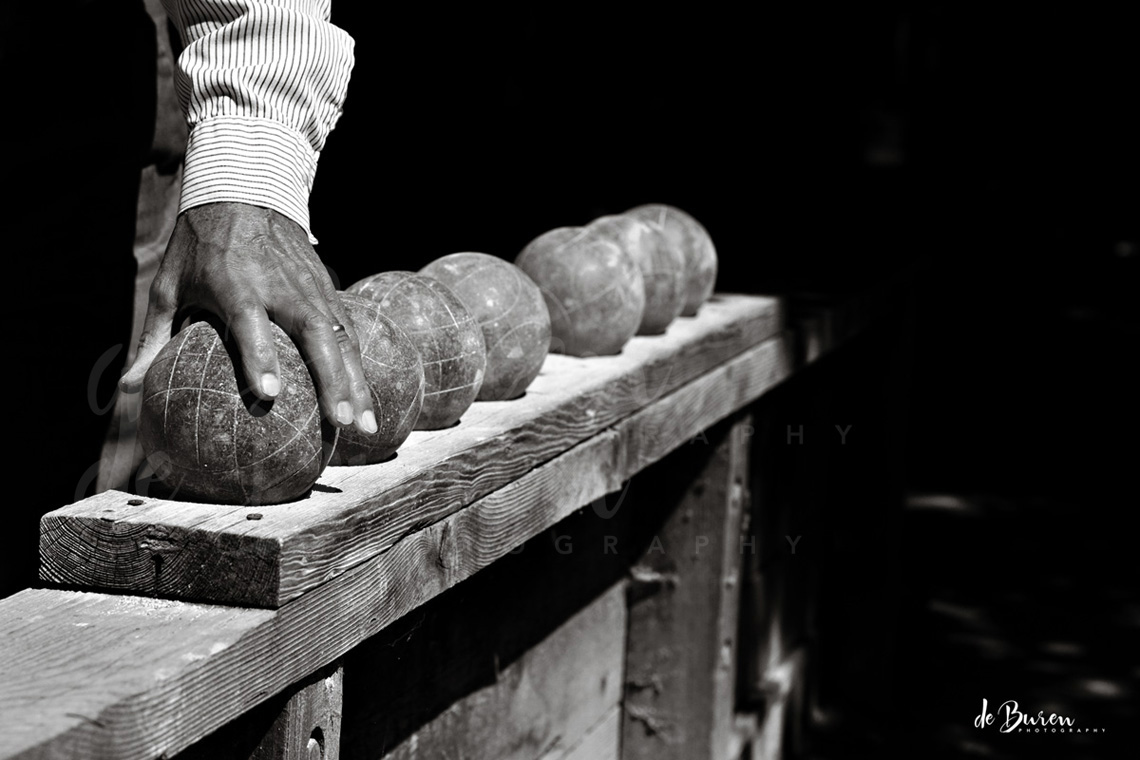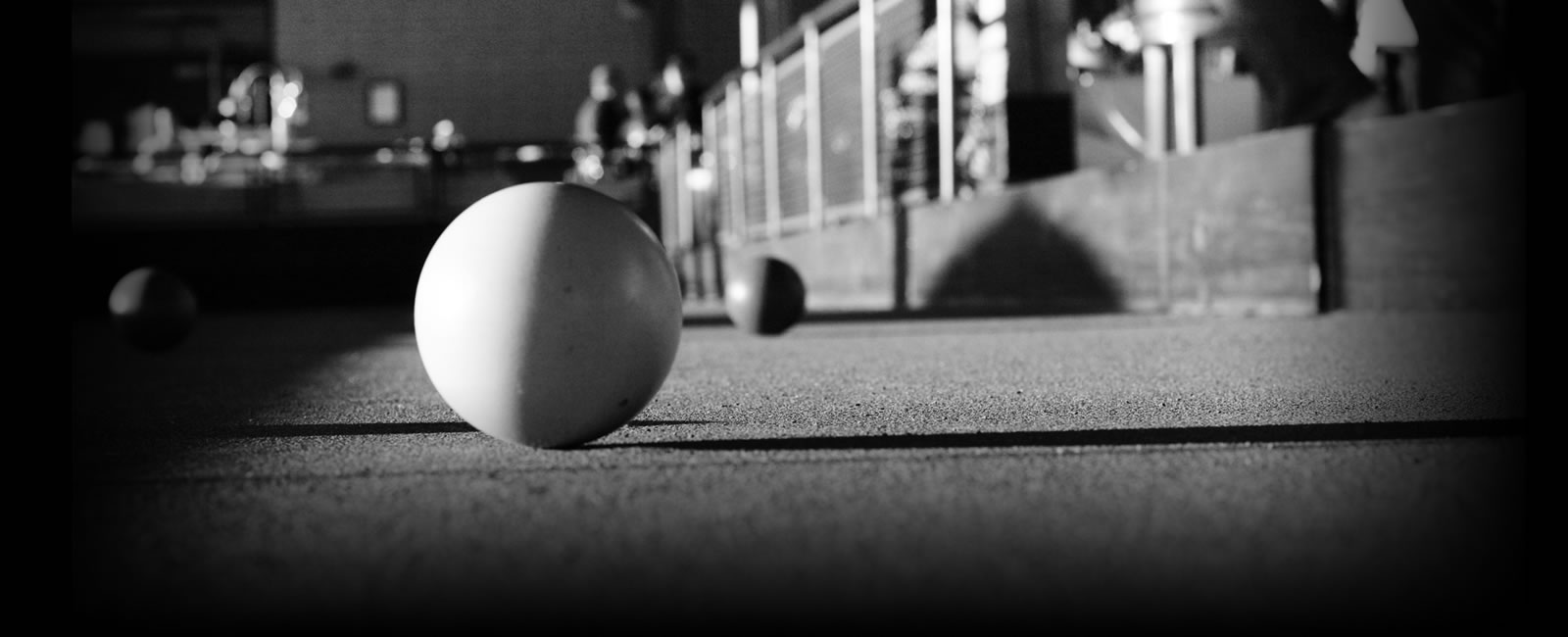"WHAT IS BOCCE?"
Bocce (bɒtʃi; Italian pronunciation: bɔttʃe), sometimes anglicized as bocci, is a ball sport belonging to the boules sport family, closely related to bowls and pétanque, with a common ancestry from ancient games played in the Roman Empire. Developed into its present form in Italy (where it is called bocce, the plural of the Italian word boccia which means "bowl"), it is played around Europe and also in overseas areas that have received Italian migrants, including Australia, North America, and South America (where it is known as bochas, or bolas criollas in Venezuela; bocha in Brazil). Bocce was initially played among the Italian migrants but has slowly become more popular with their descendants and the wider community. The sport is also very popular on the eastern side of the Adriatic, especially in Croatia, Montenegro and Herzegovina, where the sport is known in Croatian as boćanje ("playing boće") or balote (colloquially also bućanje ). In Southern France the sport is also popular and known as Boule Lyonnaise.
"HOW TO PLAY BOCCE"
Bocce is traditionally played on natural soil and asphalt, but can also be played on natural and artificial turf. Courts are generally 27.5 metres (90 ft) in length and 2.5 to 4 metres (8.2 to 13.1 ft) wide, but are found locally to be 70 to 80 ft. long, by 9-12 ft. wide. Bocce balls can be made of metal, wood, ceramics, or various kinds of plastic. Unlike lawn bowls, bocce balls are spherical and have no inbuilt bias. A game can be conducted between two players, or two teams of two, three, or four. A match is started by a randomly chosen side being given the opportunity to throw a smaller ball, the "Jack" (called a "Boccino"), or "Pallino" in some areas, from one end of the court into a zone 5 metres (16 ft) in length, ending 2.5 metres (8.2 ft) from the far end of the court. If the first team misses twice, the other team is awarded the opportunity to place the Pallino anywhere they choose within the prescribed zone.
The side that first attempted to place the Pallino is given the opportunity to bowl first. Once the first bowl has taken place, the other side has the opportunity to bowl. From then on, the side which does not have the ball closest to the Pallino has a chance to bowl, up until one side or the other has used their four balls. At that point, the other side bowls its remaining balls. The team with the closest ball to the Pallino is the only team that can score points in any frame. The scoring team receives one point for each of their balls that is closer to the jack than the closest ball of the other team.
The length of a game varies by region but is typically from 7 to 13 points, but 11 here in most Oregon Bocce leagues and tournaments. Players are permitted to throw the ball in the air using an underarm action. This is generally used to knock either the Pallino or another ball away to attain a more favorable position. Tactics can get quite complex when players have sufficient control over the ball to throw or roll it accurately.
"BOCCE RULES OF PLAY"
As all sports require certain rules for play and player conduct, so too does the ancient sport of Bocce. When the Salem Bocce League ("S.B.L.") was chartered as a non-profit, amateur sports organization, it was originally organized under the "Open Play Rules", published by the United States Bocce Federation ("U.S.B.F.") for guiding new and existing Bocce clubs in America. However, with some rules confusing or unnecessary for our club, the Board of Directors voted in 2009 to amend the U.S.B.F. rules to promote more fun and efficient game play, while keeping the essence of the core rules intact. What is listed below is a more streamlined and easy to read version for when we hold S.B.L. league play and tournaments, while the more formal and structured U.S.B.F. "Open Play Rules" are consulted and deferred to during any U.S.B.F. sanctioned tournaments.
“SALEM BOCCE LEAGUE RULES OF PLAY”
Teams
Each court will have two teams of two players. One player from each team will be located at opposite ends of the court. Each player will roll four balls of a designated color. The match begins with the flip of a coin. The winner of the coin flip may have the first toss of the Pallino (small target ball) or choose the color of the balls. At the end of each frame, the game resumes at the opposite end of the court.
Rolling the Pallino
A player may roll the Pallino any distance, so long as the Pallino passes the center line of the court, and does not hit the back wall. If the player fails to roll the Pallino properly, the opposing team player will then roll the Pallino, after which the original team player then rolls their colored ball. Any time a player is rolling their turn, all opposing players must remain outside the court. After the frame, it is best to walk on the outside of the courts in order to protect/preserve the rolling surface.
Starting the game
The first ball will be thrown by the team who originally tossed the Pallino. If that bocce ball hits the back board, the “Dead Ball” is removed and the team must roll again; otherwise, you step aside and that team does not roll again until the opposing team has either rolled one of its bocce balls closer to the Pallino, or has thrown all of its balls. Whenever a team gets a ball closer, it steps aside and lets the other team roll. This continues until both teams have used all their bocce balls. The one team who scored in that frame then throws the Pallino to begin the next frame.
Foul lines
You may step on, but not over, the foul line before rolling any ball. You can bowl your balls against the side walls at any time during play.
Scoring
Only one team scores in a frame. One point is given for each ball that is closer to the Pallino than the closest ball of the opposing team. If at the end of any frame, the closest ball of each team is at an equal distance from the Pallino, the one and only point earned in that frame is to be awarded to the player who rolled close to the Pallino ‘first’.
Balls Hitting the Back Wall
Any rolled ball hitting the opposite back board, or adjoining corner braces, before first hitting ANY OTHER ball is a “Dead Ball” and must be removed from play for that frame.
Measuring
If you are not sure which ball is closest to the Pallino then measure it with a tape measure. All ‘ties’ are awarded to the player who was closest to the Pallino first, and the second place player will have to roll any or all remaining ball(s) to try to get closer to the Pallino.
Player Conduct
In order for all players and guests to have an enjoyable experience with the sport of Bocce and each other while playing with the Salem Bocce League, we only request these three (3) simple things:
1. that all players show respect for their fellow team member, opposing teams, and guests by showing up to your league and tournament game(s) at the time scheduled, or arrange a replacement player or team ‘substitute’ if you can’t
2. that all players display good sportsmanship - before (greetings), during (low noise or distractions), and after (congratulatory handshakes) – during all S.B.L. league and tournament play; and,
3. that all players and guests are there to have fun while experiencing the sport of Bocce.
So, Let’s Get Together And Play Some Bocce!!
 Salem Bocce LeagueThe Salem Bocce League was established in 2007 as a non-profit, amateur sports club organization.
Salem Bocce LeagueThe Salem Bocce League was established in 2007 as a non-profit, amateur sports club organization. Salem Bocce LeagueThe Salem Bocce League was established in 2007 as a non-profit, amateur sports club organization.
Salem Bocce LeagueThe Salem Bocce League was established in 2007 as a non-profit, amateur sports club organization.